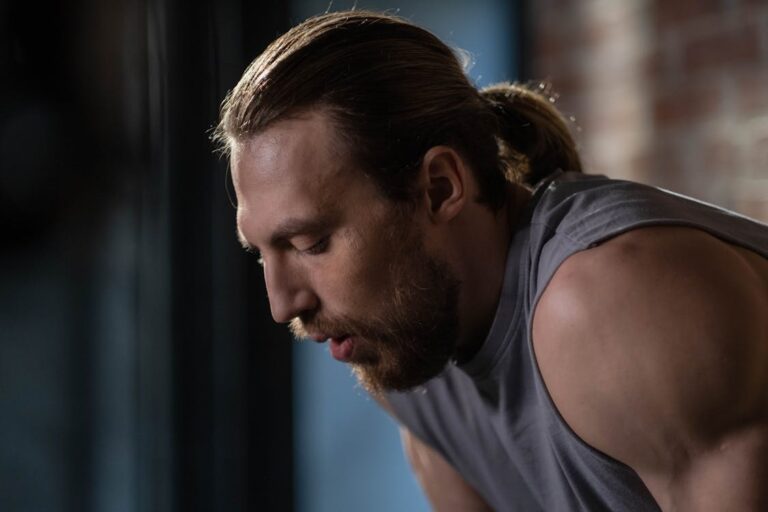Most bodybuilders would love to be called a powerlifter, but the vice versa is not true. If you say to a bodybuilder that he looks pretty big and strong like a powerlifter, he generally takes it as a complement. But, try saying to a powerlifter that you are quite muscular and look like a bodybuilder, the look he gives you is as if you are the reason for him not improving his squat.
A powerlifter in most cases is always ready with the explanation how bodybuilders are non-functional, and how strength is should be the only goal, in addition to how bodybuilding is not even a sport.
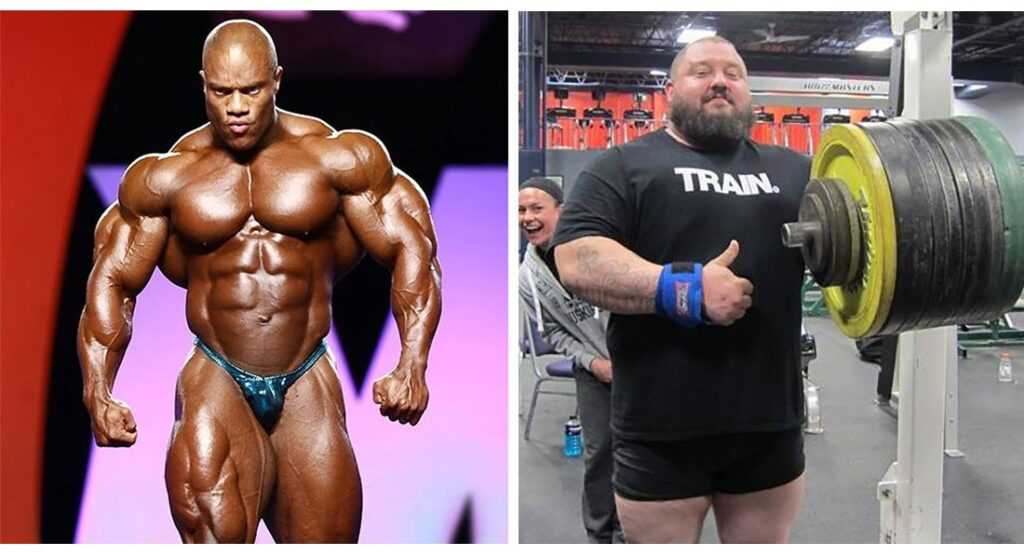
Bodybuilding & Powerlifting, technical are two distinct sports, with very specific requirements. In Powerlifting you have primarily three basic movements, squat, deadlift & the bench press. The aim of the lifter is simply one, lift maximum weight using the right technique. A powerlifter’s entire training, nutrition and recovery methods are geared towards these three basic lifts, and how to increase the poundage they can lift.
Bodybuilding on the other hand is more of an art, as the aim of the bodybuilder is to build maximum muscularity & definition, with the right size & symmetry, in order to obtain maximum points by the judges, who judge the athlete by a series of poses he/she displays on the stage. There are a lot of nutritional manipulations involved in bodybuilding, like salt and water manipulation, carb depletion & loading etc. None of these techniques are used in powerlifting.
Now, had bodybuilding been just lifting heavy weights, then all powerlifters would have also looked like bodybuilders. But in case of powerlifting, the physique in terms of symmetry and proportion are far from being attractive. Most top powerlifters are big fat, but muscular giants.
Tom Platz was known for having the biggest legs in the history of bodybuilding. In 1993 he had a squatting competition with the legendary “Fred Hatfield” (also known as “Dr. Squat” and is the first man in the history to squat over a 1000 lbs). during the competition Fred lifted 855 lbs max to Tom’s 765 lbs for a single rep. however when it came to muscle endurance Tom did a squat with 525 lbs for 23 reps as compared to Fred’s 11. This showed that bodybuilders not only have strength but also phenomenal muscle endurance.
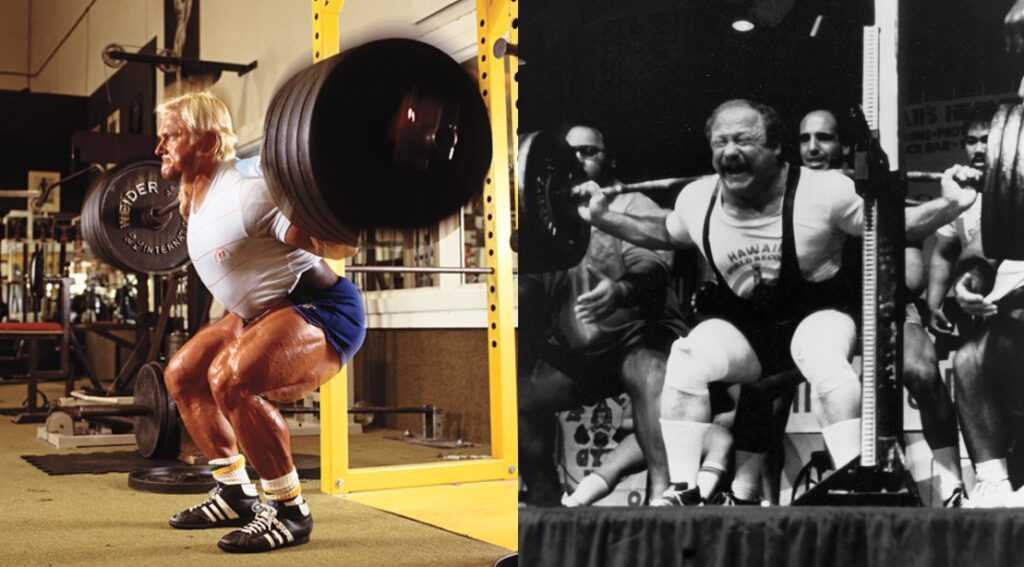
One factor which is common between the two sports is strength. Using the basic principles of exercise physiology, as per the principle of progressive overload, as you keep lifting heavier, you keep getting stronger. But when it comes to slightly advanced phase of training and increasing the muscularity, then just lifting heavy won’t do. We have seen a number of powerlifters around the world who have tremendous strength and power but are nowhere close to the bodybuilders when it comes to muscularity.
However, strength still remains the base of the workout. You cannot build a 20 inch arm with an 20 lb dumbbell.
One of the most important concepts of lifting is “Time Under Tension”. More the time for which your muscle is under tension greater will be the muscle growth. But who can put more tension on the muscle than powerlifters? What also matters is not just time under tension but the intensity and frequency of tension.
One of the reasons for a greater endurance is due to the increased number of slow twitch fibers or Type I muscle fibers which have a limited ability to produce force, an extreme example would be distance runner. However as per research, these fibers also undergo hypertrophy or increase in size, though their hypertrophy capacity is around 50% less than the fast twitch muscle fibers. These slow twitch muscle fibers are more in number in bodybuilders.
Author and world record holding powerlifter, Greg Nuckols, suggests that, the maximal force production for a given area of Type I fibres is almost exactly the same as the maximal force production for a given area of Type II fibres. Type II fibres simply reach maximal force output sooner, making them better for power-dependent activities like sprinting or jumping. Powerlifting, though (contrary to what the name may lead you to believe), is NOT a power-dependent sport. Power output actually peaks around 30-60% 1RM and is quite low with maximal loads. All of which means, fibre type distribution doesn’t influence how much you can lift very much at all.
However, there are some significant differences which explains as to why and how bodybuilders are more muscular:
- Rep range & volume – powerlifters train within a rep range of 1-5 and bodybuilders perform a rep range of 6-12. At this high rep range the type I fibers undergo greater hypertrophy due greater time under tension which is not the case with powerlifters. Also because total reps are more, more is the amount of total poundage lifted.
What this means is that, bodybuilders train with lot of volume. A powerlifter may lift much more weight during a single set, but overall weight lifted in the total workout is quite high in case of a bodybuilder, because of the shear higher number of sets and reps they do.
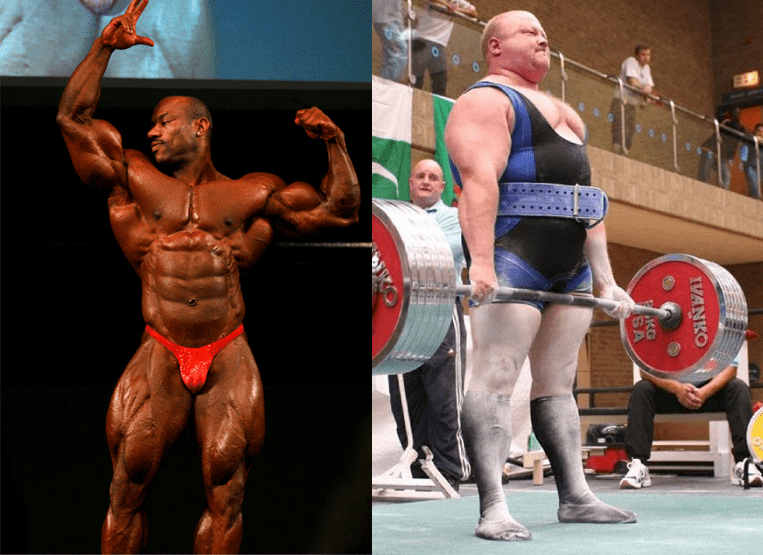
Bret Contreras gave an example of the same. “Let’s say a bodybuilder performs a bench press routine consisting of 225 x 12, 275 x 10, 315 x 8, and 335 x 6, while a powerlifter does 315 x 5, 365 x 3, 405 x 1, and 415 x 1. Under this scenario, the bodybuilder lifted 9,980 total pounds while the powerlifter lifted 3,490 total pounds.
Assuming 2 seconds per repetition, the bodybuilder accumulated 72 seconds under tension while the powerlifter accumulated 20 seconds under tension – a significant difference!”
When volume comes into play, it is inversely proportional to intensity. To go high in volume you cannot work at intensities of a powerlifter. If you try out higher repetition with your 85-90% 1RM, then you risk getting injured.
A 2014 study, suggested that, although muscle hypertrophy can be attained through a wide range of resistance training programs, the principle of specificity, which states that adaptations are specific to the nature of the applied stimulus, dictates that some programs will promote greater hypertrophy than others.
The researchers investigated muscular adaptations to a volume-equated bodybuilding-type training program vs. a powerlifting-type routine in well-trained subjects. Seventeen young men were randomly assigned to either a hypertrophy-type resistance training group that performed 3 sets of 10 repetition maximum (RM) with 90 seconds rest or a strength-type resistance training (ST) group that performed 7 sets of 3RM with a 3-minute rest interval.
After 8 weeks, no significant differences were noted in muscle thickness of the biceps brachii. Significant strength differences were found in favour of ST for the 1RM bench press, and a trend was found for greater increases in the 1RM squat.
In conclusion, this study showed that both bodybuilding- and powerlifting-type training promote similar increases in muscular size, but powerlifting-type training is superior for enhancing maximal strength.
Now, looking at this study, it looks that rep range doesn’t matter for hypertrophy. But Schoenfeld made some glaring observations in this study. First, it is important to point out that total training time in the ST group was 70 minutes while that of the HT group was 17 minutes. So, from a time-efficiency standpoint, the bodybuilding-type training produced similar hypertrophy (as well as nearly similar strength increases) in about a quarter of the time as the powerlifting routine.
Moreover, exit interviews revealed that those in the ST group were fried by the end of the study. Almost all of them complained of sore joints and general fatigue, and the two dropouts from this group were because of joint-related injury. On the other hand, the HT group all felt they could have worked substantially harder and done more volume.
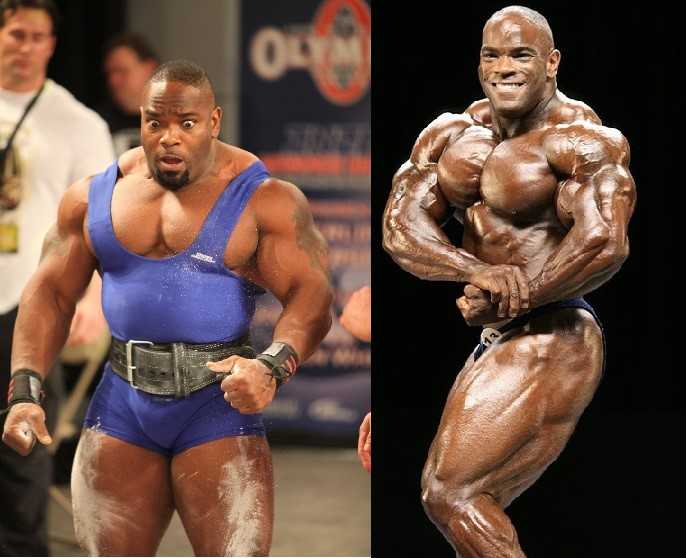
Schoenfeld says, “While mechanistically it appears that it does not matter whether heavy or moderately-heavy weights are used for hypertrophy, from an application standpoint it simply isn’t practical to train constantly with the volumes used in this study on multiple body parts. The grinding on the joints and the taxation of the neural system that is involved with repeated performance of very heavy loads ultimately has a negative impact on the lifter; I am certain that if we had continued this program for any longer, most of those in the ST group would have been overtrained and seen performance decrements. If nothing else, these finding reinforce the importance of periodizing programs so that cycles of deloading are interspersed with very heavy loading protocols.
The study indicates that the best approach to building muscle is to perform a combination of heavy and moderately heavy loads. The “hypertrophy range” is applicable from the standpoint that it allows the performance of a greater amount of volume without overtaxing the body’s resources. Adding in loads in the 1-5 RM range can enhance strength (which ultimately allows the use of heavier loads during moderate rep lifting) as well as providing a potent hypertrophic stimulus.”
A 2010 study, determined the effect of resistance exercise intensity (% 1 repetition maximum—1RM) and volume on muscle protein synthesis, anabolic signalling, and myogenic gene expression. For the study, 15 men performed 4 sets of unilateral leg extension exercise at different exercise loads or volume.
The study showed that, low-load high volume resistance exercise is more effective in inducing acute muscle anabolism than high-load low volume or work matched resistance exercise modes. That’s why bodybuilding style workouts induce greater hypertrophy.
2. Bodybuilders work for the pump. At the higher rep range muscles get pumped more which in studies have shown to be an important factor in muscle development. As the muscle gets pumped or more blood is sent into a particular muscle. Now this increase in size is perceived as a threat to the muscle cell to which it responds by increasing size and increasing the total number of satellite cells sent to the muscle. Also, there is a greater increase in muscle protein synthesis.
3. Bodybuilders train, in most cases, for momentary muscle failure, in almost every set. Failure is the stage, where you cannot perform another rep on your own. Powerlifters on the other hand never train to failure, as it can negatively affect their form.

4. Bodybuilders also incorporate a number of isolation or single joint movements along with compound or multi-joint movements. Powerlifters on the other hand stick only to basic compound lifts like bench press, squats, deadlifts, military press etc.
Bret Contreras says that, “large muscles like quads, pectorals, deltoids and lats are made up of thousands of thread like fibers that have multiple different attachment sites. These fibers are sometimes compartmentalized and/or supplied by different nerves. Thus muscles don’t always get worked evenly throughout the entire length during exercises as a certain exercise may stress a region closer to the origin or insertion. Only by training from multiple angles with a variety of exercises can you fully stimulate all of these fibers and thus maximize the development.”
5. One of the most important part of the movement is not just the concentric movement but also the eccentric movement. More the number of reps you do, more will be the eccentric movement, and more the muscle damage thus greater hypertrophy.
6. Bodybuilders while performing a rep, execute it in a very slow and controlled manner, thus increasing the time under tension. Whereas powerlifters need to lift maximum weight and can play along with their form a bit. Also, a bodybuilder never locks out his joint in any exercise thus keeping a constant tension on the muscle.
7. It is well known that higher the intensity of the workout greater hit the central nervous system takes. Powerlifters care just about lifting as heavy as possible. Bret and Brad says that, “powerlifters try to involve as many muscles as possible to generate optimum force. for example, during the bench press a powerlifter attempts to maximize leg drive along with pecs, lats, anterior delts and triceps contribute to lift the heaviest weight. They’re more concerned with optimal mechanics than muscle activation. While the powerlifter method is great for total body stimulation, the bodybuilding method really hammers a particular area and might induce more damage and a greater pump while reducing overload to the central nervous system.”
8. Different variations used in the workout like negatives, forced reps, supersets, burns, rest pause sets, tri-sets etc. deliver additional hypertrophy stimulating signals that can lead to greater muscle growth.
9. Another method to enhance hypertrophy is to reduce the time between sets. Bodybuilders take very short rest may be up to 60-100 sec as compared to up to 5 min taken by powerlifters. Short rest intervals lead to an increased anabolic hormonal response in the body.

A 2010 study, investigated the effects of different between- set rest interval durations on muscle strength after 12 weeks of resistance training. 34 non-resistance trained college-aged men were assigned to 2 groups. Both groups trained twice a week and performed the same exercises with 2 sets of 8 to 12 repetitions until volitional fatigue. One group used short- rest intervals (SR) with a work rest ratio of approximately 1:3; the other used long-rest intervals (LR) with a work rest ratio of approximately 1:6. Leg press and bench press 1 repetition maximum (1RM) were measured at baseline and after the end of the training period.
The results did not reveal significant differences between SR and LR for the bench press or leg press 1RM. The data suggest that gains in maximum strength in non-trained men are not dependent on the length of the rest interval between sets. But, what needs to be noted is that the study was done on non-trained individuals, or beginners. So, for beginners, the rest intervals do not matter.
Also, the researchers conclude by saying that, “the results are limited to muscle strength, and the manipulation of rest intervals may interfere with other adaptations such as muscle hypertrophy, power, and endurance.”
In a 2005 study, researchers studied acute and long-term hormonal and neuromuscular adaptations to hypertrophic strength training in 13 strength trained men. The study comprised a 6-month hypertrophic strength-training period including 2 separate 3-month training periods, a training protocol of short rest (SR, 2 minutes) as compared with long rest (LR, 5 minutes) between the sets.
Acc. to the study, both 3-month training periods performed with either the longer or the shorter rest periods between the sets resulted in similar gains in muscle mass and strength. No statistically significant changes were observed in basal hormone concentrations or in the profiles of acute hormonal responses during the entire 6-month experimental training period.
10. Bodybuilders give ample time for recovery to each muscle. Powerlifters hit the same muscles almost every day because of the limited range of exercises they do. This leads to cumulative fatigue overtime and decreased muscle hypertrophy.


